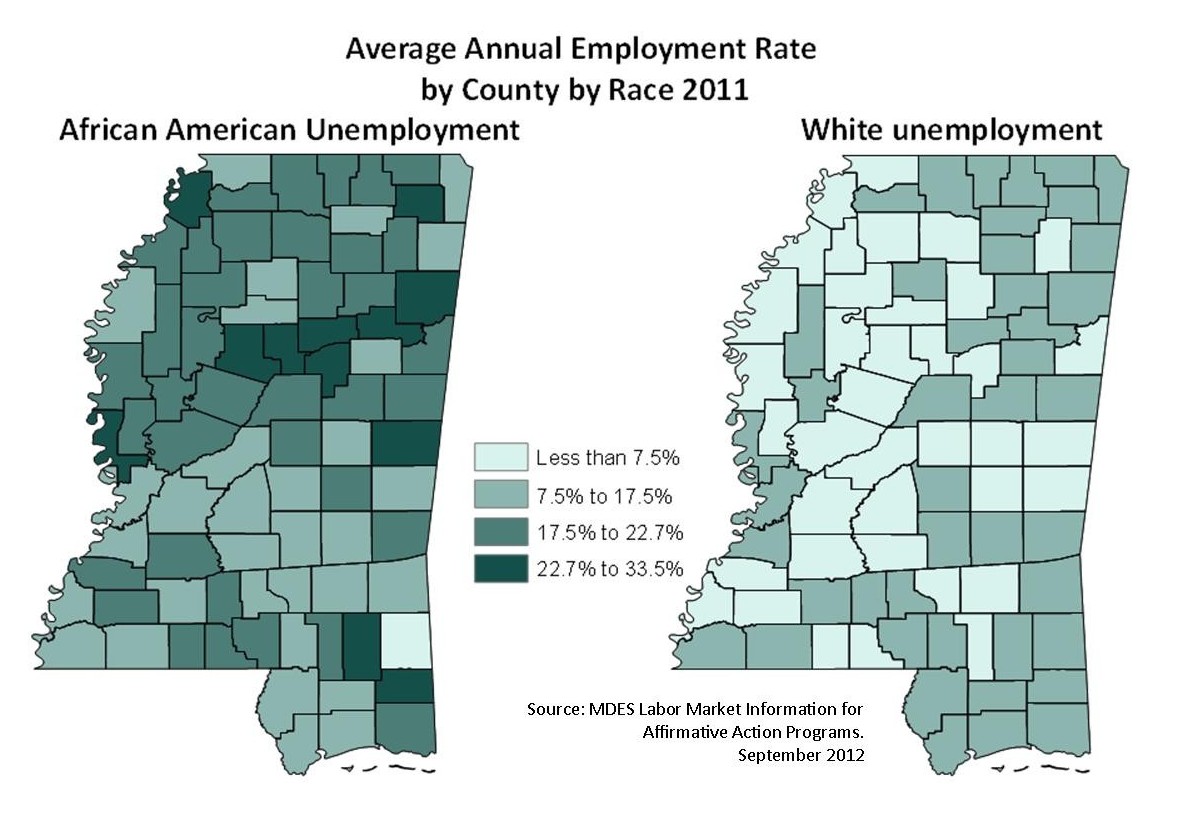As we commemorate the March, it is important to remember that one of the driving forces behind the March was to push for jobs – particularly for African Americans who had been systemically shut out of full participation in the economy.
The first post focuses on unemployment in Mississippi.
One characteristic of statewide unemployment statistics over the last few years is the fact that the white unemployment rate in Mississippi has been below the white unemployment rate of the country and that the black unemployment rate has been at or above the rate for the United States.
Another way of looking at the unemployment statistics is by county. The chart below provides a snapshot of the rates for African Americans and whites in Mississippi counties.
There are only four counties in the state in which the African American unemployment rate is below 12%. In contrast, there are only five counties in the state in which the white unemployment rate is above 12%. While disparities exist across the country by race, the Economic Policy Institute (EPI) reports that the gap between white unemployment and black unemployment in Mississippi is among the widest in the nation. EPI identifies race and differences in the ages of the workforces (the white workforce is older than the African American workforce), location and educational attainment as factors contributing to the gap.
The gap underscores the need to make deep investments in education at all levels and workforce development particularly for populations that are at risk. Inherent in such a strategy is the importance of having adequate revenue systems to ensure that the state can invest in the types of things that create jobs such as education and health care.







